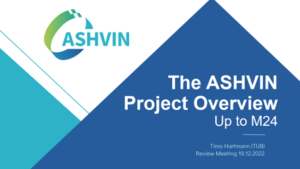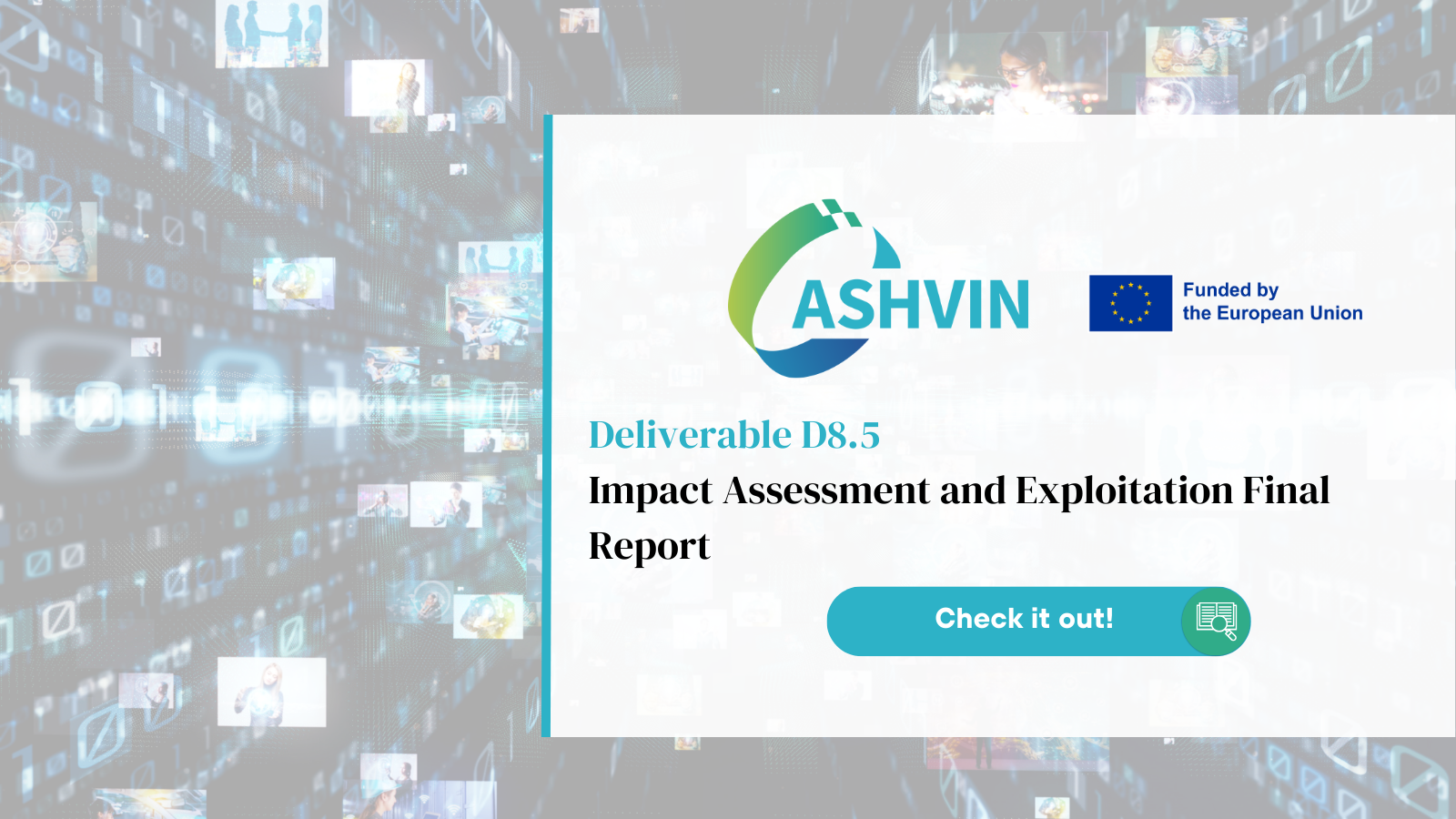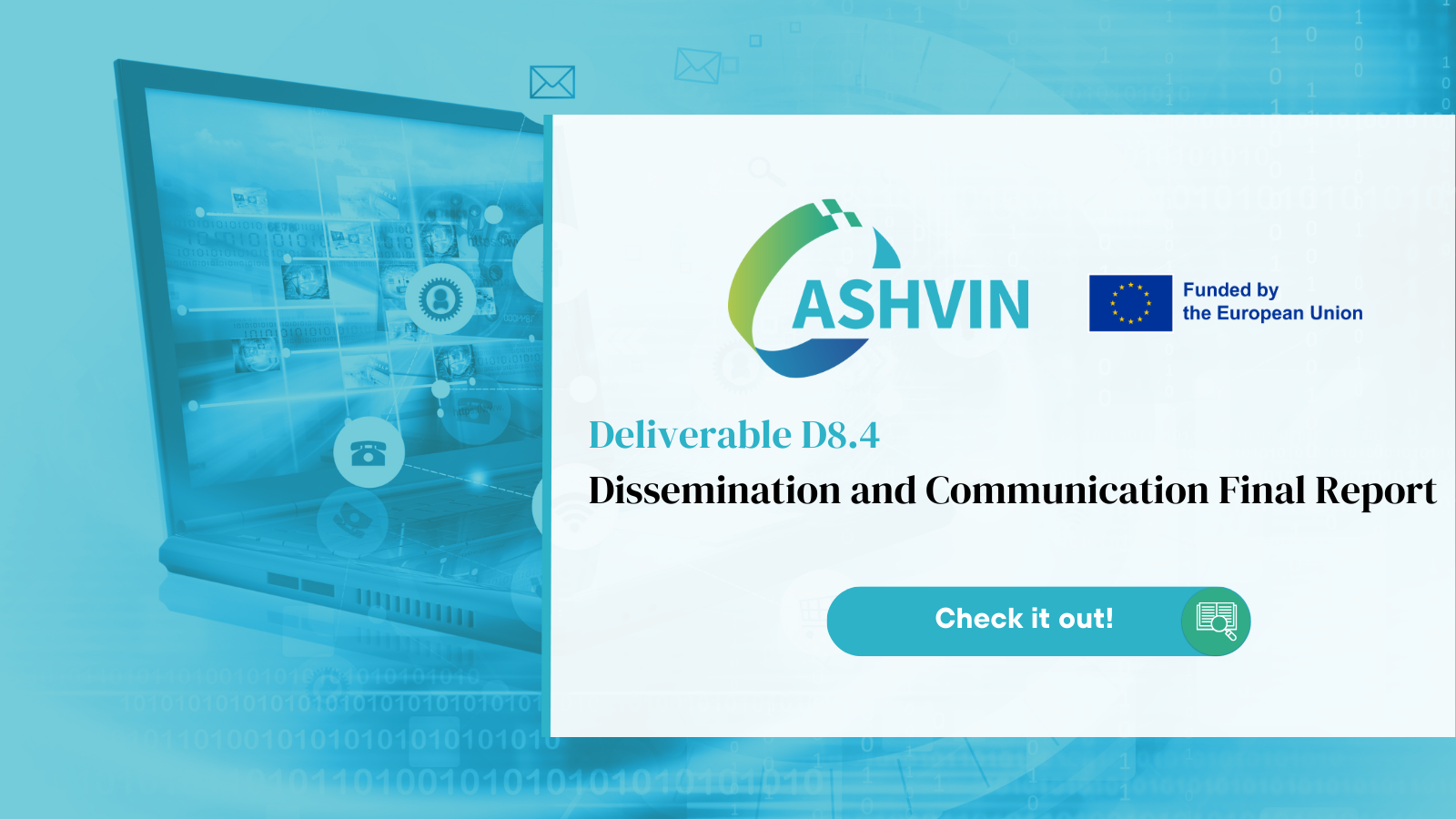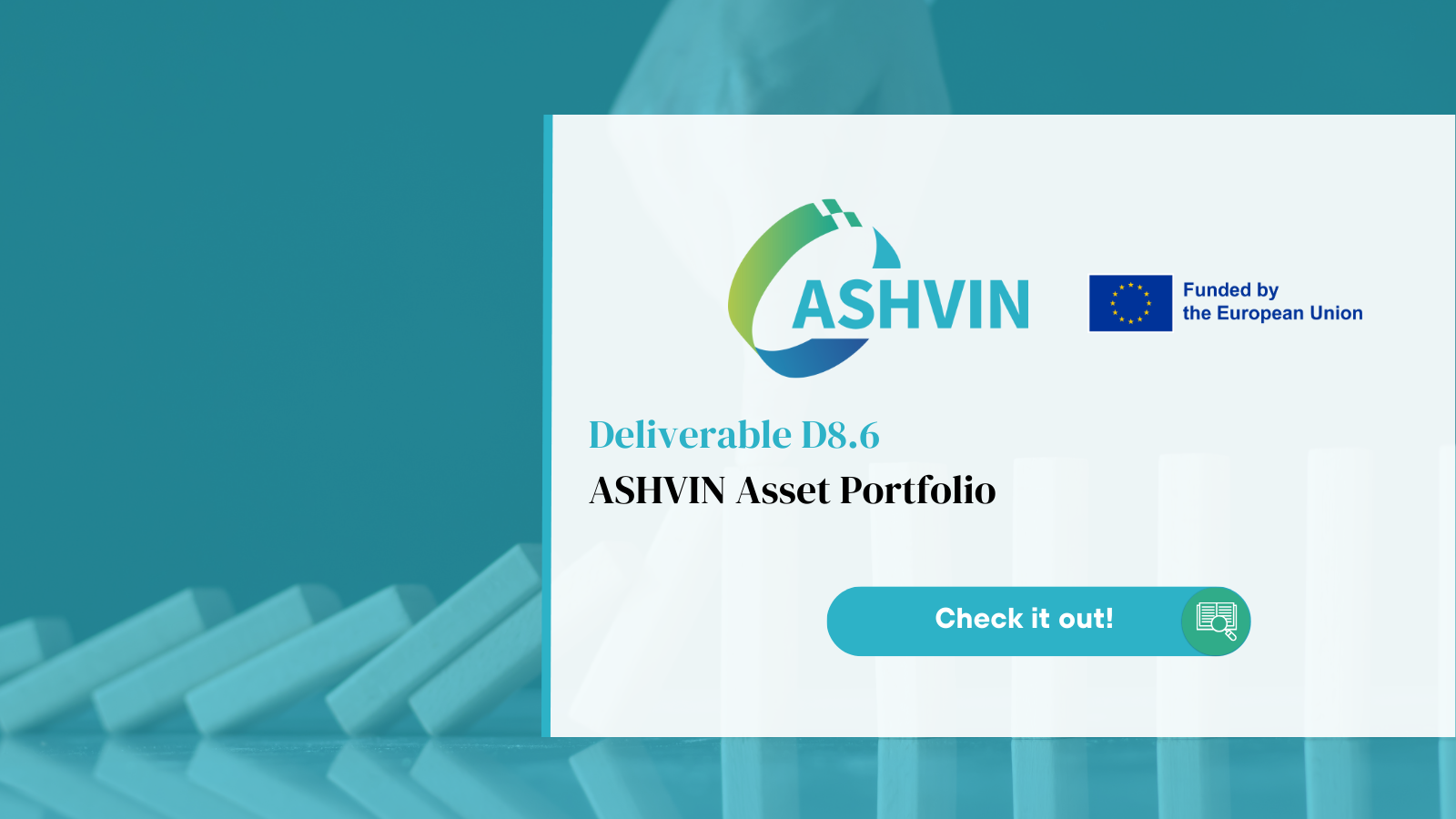On the 19th of December, 2022, the ASHVIN team, covering 14 partners from 9 European countries, gathered to present the project results to the European Commission, funding the project for three years. The 2nd project year was a great technical milestone for ASHVIN, during which the ASHVIN digital twin toolkit and IoT platform were created. Also, their validations started at the 10 demonstration sites.
ASHVIN is followed by Victoria Leroy, a project adviser at the European Health and Digital Executive Agency (HaDEA↗️), and by an external expert in the digitalisation of the construction industry. This meeting aimed to walk these advisers through the key results from the second project year and to obtain their feedback and recommendations for the final year.

The review day agenda followed the organisation of the nine ASHVIN work packages. For each WP, the leader presented their achievements, and after each presentation, the advisers had time to ask questions and give feedback. The reviewed day was hosted remotely by Professor Timo Hartmann from TUB (↗️), the ASHVIN coordinator.
MFL (↗️) gave the first presentation about ASHVIN’s IoT-driven digital twin platform (WP1), gathering data from the construction sites and providing data access for the end-users. The advisers highlighted the importance of preserving privacy in data management, an aspect managed by EUR (↗️), but also being very clear about the ownership of the collected data.
Then, SBP and TUB (↗️) presented the performed research and the developed ASHVIN tools (↗️), BRICS, EDB and GEN, to improve productivity and safety on the construction sites (W2). The possible extension of the usage of the developed tools for different types of buildings beyond the bridges was an aspect that interested the advisers. The goal is to build the general framework within the ASHVIN demonstration sites (e.g., bridges), and once this is ready, the extension to varied types how buildings can be envisaged.
CERTH’s (↗️) presentation on Data fusion for real-time simulation of construction (WP3) showed how the gathered data could help the end-users to track down different activities at the construction sites. Here the recommendation was to define clearly the KPIs of each developed component, as the end-users want to be sure that each technology solution runs correctly. The KPI definition and assessments are part of the work conducted at the ASHVIN demonstration sites (WP7).
During the presentation on Control and real-time simulation of the construction (WP4) given by DTT (↗️), the clearing of the collected data models interested the external expert, as he understands that this task takes a lot of time and it has to be clear whose responsibility it is in projects. The ASHVIN team explained that the clearing of the models is in charge of the designer partners. Also, it was pointed out that ASHVIN will be precise for the end-users regarding which type of data is needed for each ASHVIN tool to be deployed.
Then, UPC (↗️) showed how three ASHIN tools, MatchFem, GISI and RISA, are deployed for Digital twin-based structural monitoring and asset management (WP5) at five demonstration sites, which opened the way for the presentation of the ASHVIN demonstration sites (WP7). The demonstration site management, covering 10 demonstration sites across Europe, interested the project advisers, especially from the point of view of accessing the construction sites and being able to perform data collection, as these two activities are always challenging research phases in the field of construction where the construction site managers are busy and do not always see the added value of allocating time to allow data collection at the site.
The presentation by ASI (↗️) on Social innovation and standardisation (WP6) presented the work on the innovative processes to improve health and safety at the construction sites and the ASHVIN’s efforts to develop an international standard fostering the uptake of the digital twin technologies. The forthcoming application of the proposed standard in construction projects interests the project advisers, and they continue following this task closely.
Finally, AUS (↗️) showcased the results of the Dissemination, Communication and Exploitation of the ASHVIN project (WP8), especially ASHVIN’s active presence on social media and participation in scientific conferences got positive feedback from the advisers. The final year will focus on fostering the number of scientific publications in scientific journals and finalising the business model to exploit the ASHVIN solution in the construction markets.
The ASHVIN team is committed to delivering all the set objectives on time and with high-quality work; this strategy paid off with positive and well-focused feedback from the project advisers. Now, the project tackles the final year with primary objectives, especially regarding the dissemination, demonstration and exploitation of ASHVIN.





